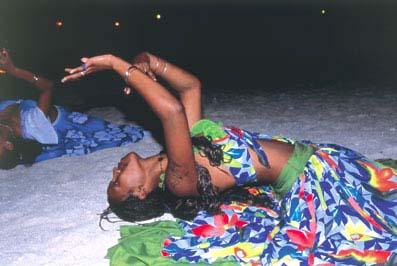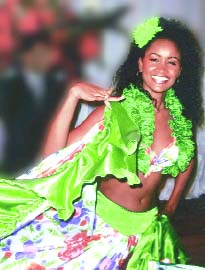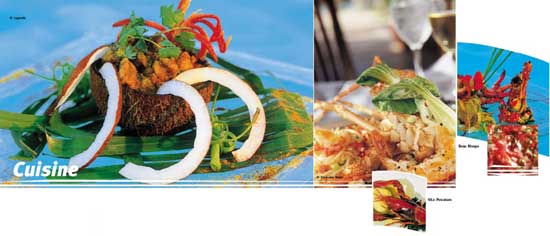cultura

The Traditional Dance
The Sega is a dance which originated from the ritual music of Madagascar and the mainland of Africa. Sega is one of the cultural pleasures to be enjoyed in Mauritius. The sega, mainly based on African music originating with slaves, is nowadays played with modern instruments and features contemporary musical influences.

The rubbing of feet, the swaying of hips and Creole lyrics are part and parcel of the music. The slaves obviously began dancing the sega to forget their miserable existence. There are now several types of sega in Mauritius. Standard sega (where the instruments are the ravanne, the maravanne and the triangle) has its own disciples and devotees.

The Culture
Half of the population in Mauritius is Hindu and approximately a fifth is Muslim. Both religions are descendent of indentured labourers that were brought during British Colony to work in cane fields.
The remaining population comprises mainly Chinese and Sino - Mauritians, Creole (descendants of African slaves) and Franco Mauritian (the original settlers of the island).
The latter today still occupy many of the sugar estate and control almost all sugar plantation.
The Cuisine
One interesting thing of a visit to Mauritius is the variety of cuisines it offers. The most common varieties are Creole, Chinese, European and Indian. A typical Mauritian cuisine includes rougaille (a Mediterranean dish of tomatoes), Sounouk (Salted dry fish), Octopus stew, Daube de poisson and Biryani (Mauritian version).
Our favourite Mauritian beverages include Alooda (a syrupsy brew of agar, milk and flavourings such as vanilla or Almond. You can also try our traditional snacks : Dholl puri (our national food), Gateaux piment, Samoussa and Baja.

Notable dates in the Mauritian calendar
The people of Mauritius have several events in which they celebrate each year. Here are some notable dates in the Mauritian calendar.
Maha Shivatree
Is Celebrated in honour of Lord Siva (February). Following an all all night vigil, Hindu devotees, clad in white, carry the "Kan - war" - wooden arches covered with flowers - in pilgrimage to Grand Bassin, to fetch holy water from the lake. The whole scene is reminiscent of the great rituals on the banks of the Holy Ganges in India.
Eid-Ul-Fitr
Is celebrated to mark the end of Ramadan, the Muslim holy month of fasting. Prayers are offered at mosques during the day.
Father Pere Laval
In September people of all faiths flock to the shine of Father Jacques Desire Pere Laval in Ste. Croix, Port Louis. You can almost catch a glimpse of Lourdes in the fervour of the great crowds who attribute miraculous healing powers to this holy man.
Chinese Spring Festival
The Chinese New Year's Day (January / February), which every year falls on a different day because of the adjustment of the lunar days to solar days, is preceded by a thorough spring - cleaning of the home. Red, symbolic of happiness, is the dominant colour. Food is piled to ensure abundance during the year, and the traditional wax cake is distributed to relatives and friends. Firecrackers are lit to ward off evil spirits.
Divali
The most jovial of all Hindu festivals, celebrated in October / November, it marks the victory of Rama over Ravana and also commemorates Krishna's destruction of the Demon Narakasuran. Clay oil lamps are placed in front of every home turning the island into a fairyland of flickering lights.
Holi
This Hindi festival is as colourful as the numerous legends which inspire it. Essentially, it is a festival of revelry when men and women enjoy themselves by squirting coloured water and powder on one another. It is a time for rejoicing and exchanging greetings.
Cavadee
Cavadee is celebrated in January / February. Along with the fire walking and sword-climbing ceremonies, Cavadee is among the most awesome Tamil events. Their bodies pierced with needles and their tongues and cheeks with skewers, devotees trance-like and in penance, trek along bearing the "Cavadee", a wooden arch covered with flowers with a pot of milk at each end of its base, to place it before the deity in the temple. At this point, despite the long hot trek, the milk should not have curdled.









